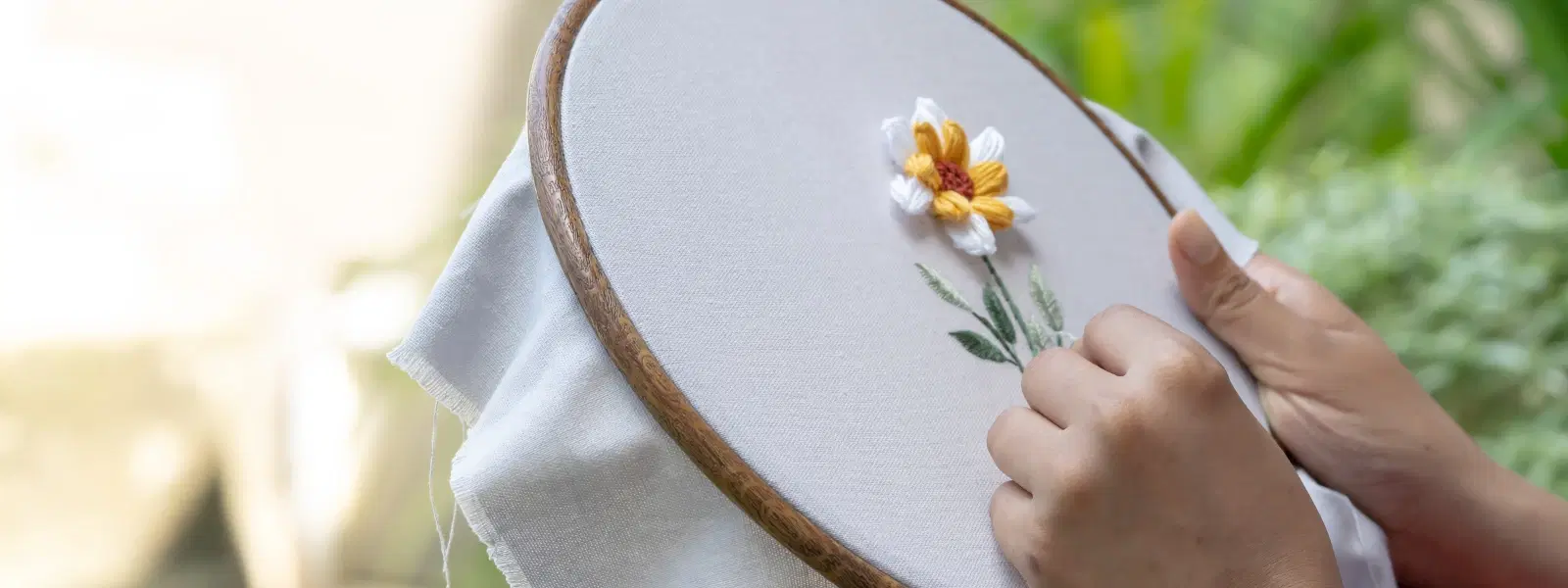
Hotels
•03 min read

Kantha embroidery is a centuries-old art form that weaves tales through delicate stitches, deeply rooted in the cultural soil of Bengal. This unique blend of artistry and narrative tradition showcases the rich textile heritage of the region. In this blog post, we answer frequently asked questions about Kantha, exploring its history, techniques, designs, and enduring cultural significance. Readers will gain insight into how this folk art not only beautifies fabric but also acts as a medium for storytelling and preserving Indian textile heritage.
Kantha embroidery originated in rural Bengal, where it began as a practical means to repurpose old textiles. Over time, what started as a utilitarian craft evolved into a celebrated art form. Traditionally, rural Bengali women would use leftover fabric scraps to create quilts, garments, and other household items, stitching them with a running stitch that later became synonymous with the style. This economical recycling of resources not only provided warmth and comfort but also became a creative outlet, laying the foundation for what we now recognize as Kantha embroidery.
More than just a decorative art, Kantha embroidery is a powerful medium for storytelling. Each piece reflects the personal experiences, beliefs, and daily lives of its creator. As artisans embroidered tales of love, nature, and folklore into each design, Kantha played a vital role in preserving Bengal's cultural identity. This form of "Bengal traditional stitching" speaks volumes about the societal norms and regional traditions, bridging generations and connecting communities through shared narratives.
The art of Kantha primarily employs a simple running stitch, a technique that allows for elaborate patterns and fluid designs. These stitches create intricate and rhythmic lines, a hallmark of handcrafted Kantha art. Compared to other styles such as sashiko or Rajasthani embroidery, Kantha stands out for its expressive simplicity and the way its motifs unfold a visual narrative. While sashiko relies on repeated geometric patterns, Kantha reveals a story within every loop and thread, making each creation distinct.

One of the most endearing aspects of Kantha embroidery is its eco-friendly approach. Artisans often use recycled fabrics and threads, breathing new life into discarded textiles. This sustainability is not only economical but also environmentally responsible, turning what could be waste into beautiful Kantha quilts and garments. This practice has cemented Kantha embroidery as a form of cultural sustainability and an early example of eco-conscious design within the Indian textile heritage.
There are various types of Kantha embroidery designs that showcase the versatility of this craft. Traditional forms such as sujani, lep, and nakshi Kantha each have their own distinctive patterns. Sujani often features bold, straightforward motifs, while lep Kantha is known for its elaborate, repetitive patterns. Nakshi Kantha, in contrast, is a more decorative form that incorporates intricate storytelling elements. These diverse types of Kantha stitch patterns have been adapted for a range of applications, from quilts and garments to decorative wall hangings.
The motifs used in Kantha embroidery are deeply symbolic. Common themes include depictions of flora and fauna, geometric designs, and scenes inspired by everyday rural life. Many of these motifs serve as visual metaphors, representing hope, prosperity, and the cycle of life. These narratives are embroidered with care, transforming a simple fabric into a canvas of rich cultural expression and storytelling through embroidery.
In recent years, there has been a notable revival of Kantha embroidery in the realm of contemporary fashion and home décor. Global interest has brought Bengal's storytelling stitches to international designers, propelling this traditional art form into trendy, modern collections. Today, Kantha designs are embraced by both artisans and designers worldwide, highlighting a renewed appreciation for handcrafted Kantha art and its enduring relevance in Indian textile heritage.

Despite its rising popularity, Kantha artisans face numerous challenges. Increased competition and commercialization threaten the preservation of traditional techniques. Many skilled craftsmen struggle to maintain authenticity amid mass production pressures. However, various initiatives and community programs are stepping in to support these artisans, ensuring that the integrity and cultural essence of Kantha embroidery continue to thrive. These efforts underscore the importance of sustaining this unique form of folk art embroidery and its role in celebrating Indian legacy.
Kantha embroidery is often referred to as 'Bengal’s storytelling stitches' because each piece narrates a unique tale of the artisan’s life, beliefs, and surroundings.
Nakshi Kantha refers to a more intricate and decorative form of Kantha embroidery, often featuring elaborate motifs and storytelling elements, while Kantha generally encompasses a broader range of stitching styles.
Rajasthani embroidery typically uses stitches like chain stitch, buttonhole stitch, and mirror work, which differ from the running stitch commonly used in Kantha embroidery.
Kantha and sashiko both use running stitches, but Kantha emphasizes storytelling and intricate motifs, while sashiko focuses on geometric patterns and the functional reinforcement of fabrics.
Kantha embroidery is far more than a simple craft—it is a vibrant expression of Bengal’s rich cultural heritage and timeless storytelling traditions. From its humble origins as a method of textile recycling to its modern resurgence, Kantha has evolved into a celebrated art form that continues to inspire both artisans and admirers alike. By exploring its history, techniques, and the rich symbolism behind each motif, we not only appreciate the beauty of Kantha designs but also recognize its profound impact on Indian textile heritage.